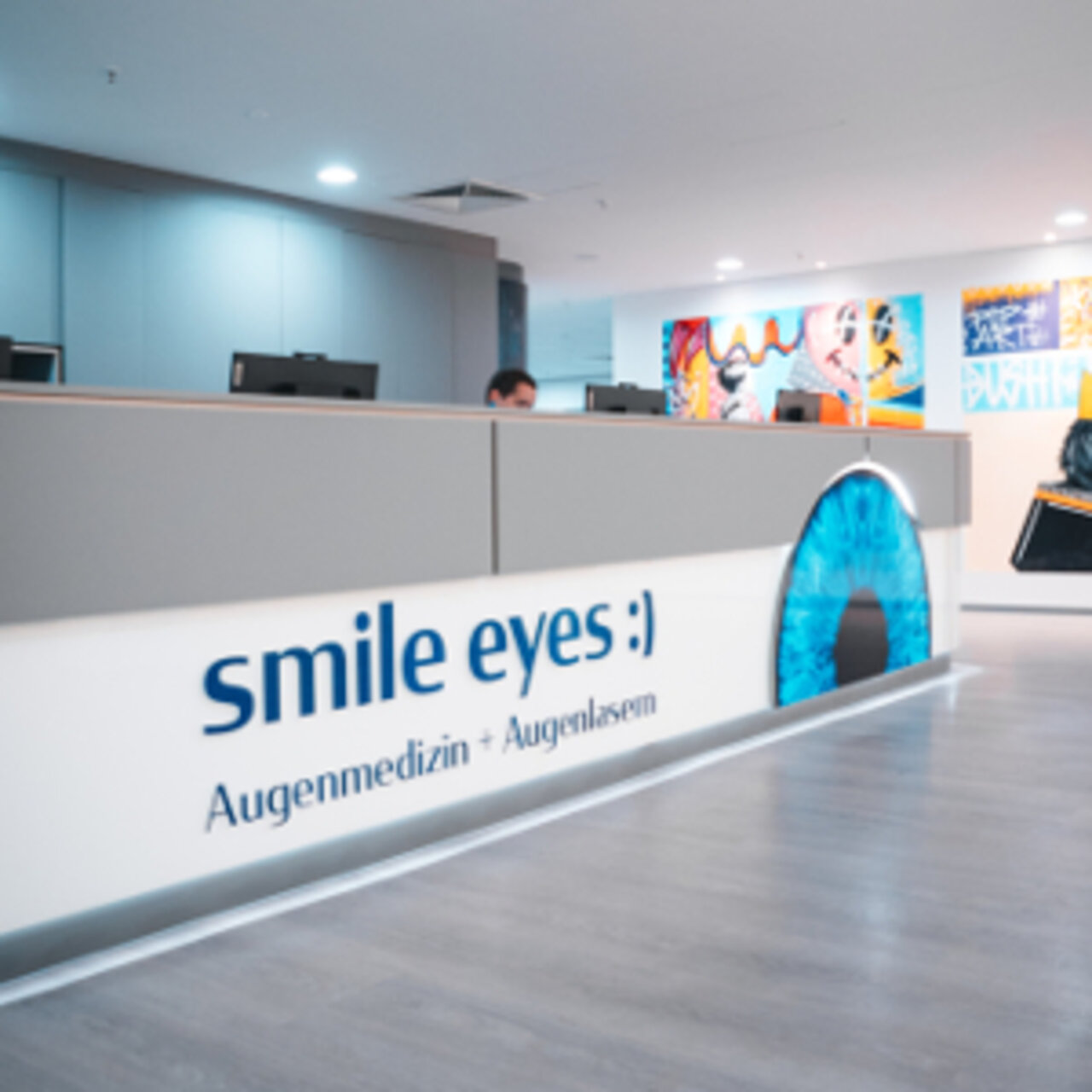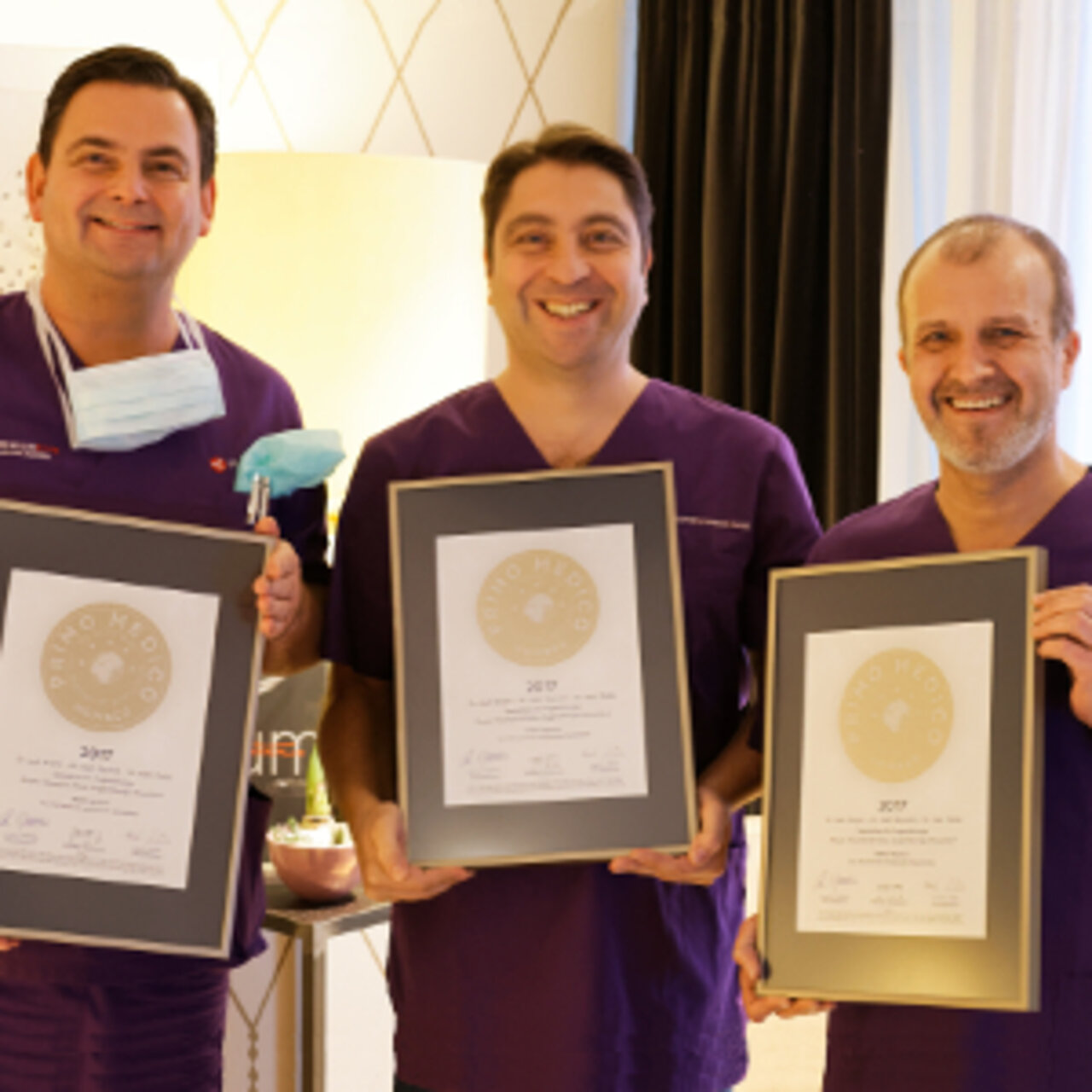Specialists in Dry Eyes Syndrome
7 Specialists found
Information About the Field of Dry Eyes Syndrome
What Is Keratoconjunctivitis Sicca?
Keratoconjunctivitis sicca often referred to as "dry eye syndrome," is common. Dry eye syndrome refers to a moisturizing disorder of the conjunctiva and cornea.
Together with other secretions, the tears form a film on the eye's surface in a healthy eye. This keeps the surface of the eye smooth and protects it. It also has a germicidal effect and thus prevents infections. The tear film consists of an aqueous layer, a layer of mucin, and a lipid layer. The lacrimal glands form the aqueous portion of the tear film. The meibomian glands, the sebaceous glands of the eyelid margins, produce the lipid layer. The goblet cells of the conjunctiva secrete the mucous secretion. The tear film is also important for the oxygen supply of the cornea. The cornea has no blood vessels of its own to keep it clear for good vision. The tear film supplies the cornea with oxygen from the air.
In dry eye syndrome, the lacrimal glands do not produce enough tear fluid. Sometimes the meibomian glands also produce too little secretion, and the tear film composition is altered. If there is a lack of tear fluid, the cornea and conjunctiva become sore and can become inflamed. The eyes feel dry, are red, itchy, and burn. Patients have the feeling of having a foreign body in their eye. They often suffer from pain, a sensation of pressure, photophobia, and stuck eyelids.
Constantly watering eyes can also be a symptom of dry eyes syndrome. If the composition of the tear fluid is altered, a sufficient lubricating film cannot be formed. The eye reacts by producing more aqueous tear fluid, but this alone cannot form a lubricating film. Due to the lack of tear film, the cornea is also supplied with less oxygen. The cornea is then of the necessity provided via the blood vessels of the eyelids. Due to the increased blood supply to the vessels, the eyelids are red and swollen, especially in the morning.
What Causes Dry Eyes?
Most often, dry eyes are caused by external factors. Due to heating and air conditioning, draft or low humidity in rooms are common causes of dry eye syndrome. Low humidity causes the tear film to evaporate more quickly. Working at a screen can also lead to dry eyes, as people look at the screen for a long time without blinking. The blink moistens the eyes. In addition, cosmetic products can disrupt the tear film. For example, people using contact lenses are more often affected by dry eyes. Older people and women also suffer from it more often.
Dry eyes also occur in connection with certain general diseases. These include immunological diseases, diabetes, neurodermatitis, thyroid diseases, and rheumatism. In addition, Sjörgen's syndrome, chronic inflammation of the joints, and facial nerve paresis can also cause dry eyes.
In addition, medications can be responsible for dry eyes. Many drugs affect tear production:
- Beta-blockers (heart medication)
- Local adrenaline preparations (contained in some eye drops or ointments)
- Local cortisone preparations (included in some eye drops or ointments)
- Ovulation inhibitors (birth control pills)
- Preparations containing estrogen
- Acetylsalicylic acid (painkillers, blood thinners)
- Anticholinergics (drugs that act on the parasympathetic nervous system)
- Ergotamine (migraine medication)
- Isotretinoin (medicine for skin inflammation)
- Neuroleptics (medications for psychosis)
- Thiazide diuretics (medication for dehydration)
- Trihexyphenidyl (Parkinson's disease medicine)
- Certain antidepressants
What Can Be Done Against Dry Eyes?
Dry eyes are mainly treated with eye drops that replace the tear fluid. Patients can drip artificial tears into their eyes several times a day. Depending on the preparation, the eye drops have different ingredients, for example, methylcellulose or hyaluronic acid. In addition, they can be liquid or gel.
The ophthalmologist decides which eye drops are best for the patient. Eye drops without preservatives should be used, as these can trigger allergies. Especially in the case of previous allergic diseases, the patient should pay attention to this. In more severe cases, the ophthalmologist can give anti-inflammatory eye drops against the inflammation.
Eye drops with autologous serum can help in cases of corneal healing disorders. These eye drops are made from the patient's serum. In cases where persistent administration of artificial tears would be necessary, the ophthalmologist can close the tear drainage tubules with silicone plugs to increase the number of tears.
The patient can prevent dry eyes by ensuring adequate humidity in heated or air-conditioned rooms and plenty of fresh air. Drafty air, for example, from car ventilation, should be avoided. People wearing contact lenses can reduce discomfort by moistening them with tear substitutes and not wearing them all day. Patients with dry eyes should use well-tolerated cosmetic products.
When Should You See a Doctor for Dry Eyes?
Tear substitute fluid, preferably without preservatives, can be purchased by the patient at the pharmacy. It is safe to use. However, the cause of dry eyes should be clarified by an ophthalmologist, especially if the problem persists for a long time. In this way, serious diseases can be detected, and dry eyes can be treated optimally. First, the ophthalmologist examines the composition of the tear film and the eyelids, including the marginal eyelid glands. Then, he uses Schirmer's tear test to assess the aqueous portion of the tear film. Next, a strip of paper is placed in the conjunctival sac and soaks up tear fluid. This allows the doctor to see if there is enough aqueous tear.
The ophthalmologist also determines the time that elapses between the blinking of the eyelid and the breaking of the tear film. To do this, he stains the cornea with a dye and looks at the eye's surface with a slit lamp. From this, he can conclude the quality and composition of the tear film. Then, depending on the findings, the ophthalmologist decides which eye drops are suitable. Sometimes several preparations have to be tried to find the one that helps best.
Literature:
Grehn. F. (2012). Augenheilkunde. 31. überarbeitete Auflage, Springer Verlag 2012
Berufsverband der Augenärzte Deutschlands e.V. Trockene Augen. Link: augeninfo.de/cms/hauptmenu/augenheilkunde/augenerkrankungen/trockeneaugen.html (1.12.2020)
Berufsverband der Augenärzte Deutschlands e.V. (2017). Patientenbroschüre: Das trockene Auge – eine ernstzunehmende Krankheit. Link: http://cms.augeninfo.de/fileadmin/pat_brosch/sicca.pdff(1.12.2020)






